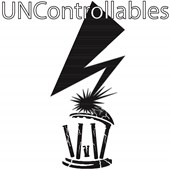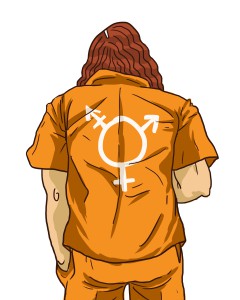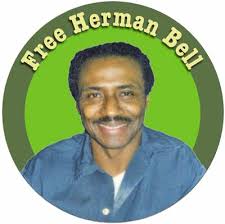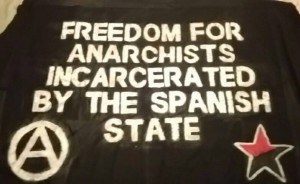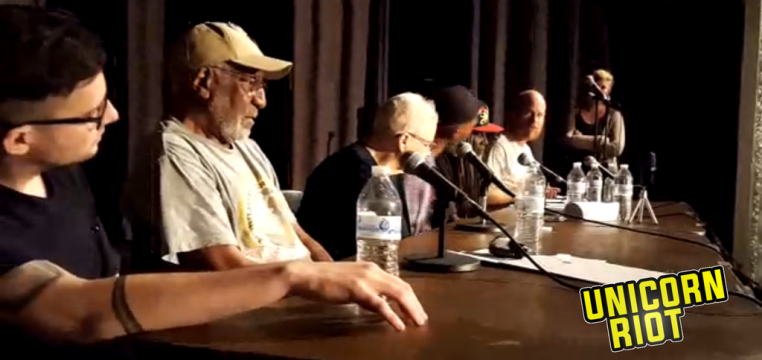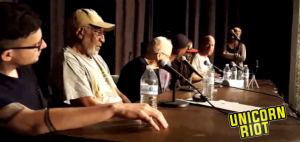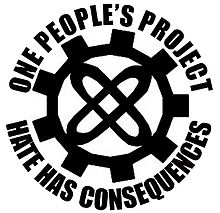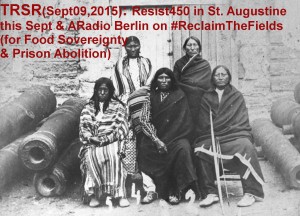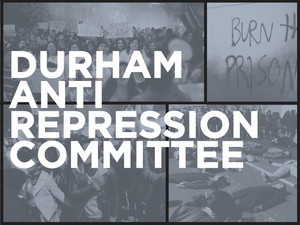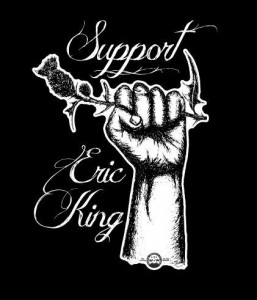No New OC Jail
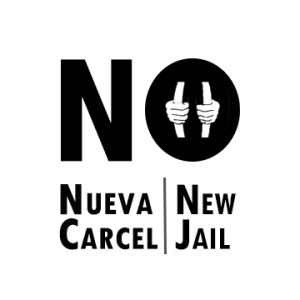
Download This Episode
This week Bursts spoke with the No New OC Jail coalition, which is opposing the building of a new jail in Orange County, NC. In this interview, we speak about the social conditions surrounding this opposition, as well as generalized opposition to the prison industrial complex.
More about this and to see this coalition’s petition, you can visit here.
Also included is a segment from our friend the Stimulator at www.submedia.tv about student uprisings in South Africa.
Announcements
Certain Days:
The Certain Days: Freedom for Political Prisoners Calendar collective (www.certaindays.org) is releasing its 16th calendar in the Fall of 2016. Over the years, we’ve turned our attention to various themes: grassroots organizing, resisting repression, and visions of justice. The theme for 2017 is focused on what it takes to sustain our movements.
We are looking for 12 works of art and 12 short articles to feature in the calendar, which hangs in more than 2,000 homes, workplaces, prison cells, and community spaces around the world.
We encourage contributors to submit both new and existing work. The deadline for submission is March 15th, 2016.
For further information, such as submission guidelines, format, and so on you can visit this project’s website here
AN UPDATE ON THE PRISONER UPRISINGS IN ATMORE, AL:
From https://itsgoingdown.org/
“Things here are tense but festive. The C.O. and warden was stabbed…It has nothing to do with overcrowding, but with the practice of locking folks up for profit, control and subjugation. Fires were set, we got control of two cubicles, bust windows. The riot team came, shot gas, locked down, searched the dorms. Five have been shipped and two put in lockup.”
~A Prisoner at Holman Correctional
This week, prison rebels at Holman Correctional Facility in Atmore, Alabama staged two riots in three days—battling guards, building barricades, stabbing the warden, taking over sections of the prison and setting a guard station on fire. These actions come as no surprise to those who have been paying attention to the crumbling prison system in
Alabama and the increasing level of radicalization of the prison population there.
The uprising at Holman, and the conditions of Alabama prisons in general, provide a unique situation in which anarchist solidarity may prove strategic. Historically speaking, successful prison uprisings have often been the result of a degrading prison system (incompetence,
understaffing, weak administration) in combination with a high level of prisoner-unity and the development of a strong political subculture within the prison that supports and encourages acts of resistance. These conditions shift the balance of power between prisoners and their captors and allow prisoners more latitude to take bold action.
Prison rebels in Alabama report that guards often refuse to enter the cell blocks for months at a time out of fear of attacks. The conditions for rebellion are ripe in the Alabama prison system.
The connections that Alabama prison rebels and anarchists outside of prisons have cultivated over years have created a situation in which expressions of solidarity from anarchists may have an impact. There is a great possibility that news of solidarity actions will reach prisoners there and that those actions will make sense to these rebels.
Another way in which anarchist solidarity may prove uniquely valuable in this and other situations of prison rebellion is in our capacity to relate to these uprisings outside the framework of reform that the media, the state and the left will inevitably push them toward. We are already hearing the rhetoric of those outside Holman turning immediately toward reform, appeals to legitimacy in hopes of reaching journalists and liberals, and framing the riots as a ‘last resort’ after non-violent methods failed.
What we propose instead is direct affirmation, through action, of prisoners’ own revolt. In this, our solidarity is equally with those demanding better living conditions and those who say, quite simply, “they need to let us free up out this bitch” and “there’s only one way to deal with it: tear the prison down.”
In the spirit of diversity of tactics we’ve compiled a list of some ways to act in solidarity with prison rebels in Alabama. The intention of this list is to find ways to act in solidarity with the many, often contradictory, desires of the many different rebels involved in the uprising.
- Publish and spread the list of demands, provided by journalists who were able to get in touch with some of the rioting inmates:
We inmates, at Holman Prison, ask for immediate federal assistance. We ask that the Alabama government release all inmates who have spent excessive time in Holman Prison — due to the conditions of the prison and the overcrowding of these prisons in Alabama. We ask that the 446 laws [Habitual Felony Offender laws] that Alabama holds as of 1975 be abolished. We ask that parole board release all inmates who fit the criteria to be back in society with their families. We ask that these prisons in Alabama implement proper classes that will prepare inmates to be released back into society with 21st century information that will prepare inmates to open and own their own businesses instead of making them having to beg for a job.
We also ask for monetary damages for mental pain and physical abuse that inmates have already suffered. - Call and write Alabama Department of Corrections officials:
General: http://www.doc.state.al.us/Contact.aspx
Holman: (251) 368-8173 - Contact inmates at various Albama prisons in order to form bonds and connections on which to build struggle.
http://www.doc.state.al.us/InmateSearch.aspx
Currently you can type a letter into the first or last name section and get a whole giant list of inmates to choose from. It’s up to you to discern who you’d like to write to. We avoid inmates who are listed as having racist tattoos or sex crimes. However there are also several pen pal sites where you can find Alabama inmates who are already looking to maintain correspondence with someone. - Visit
https://itsgoingdown.org/call-actions-solidarity-alabama-prison-rebels/ for more creative ways to get involved!!

